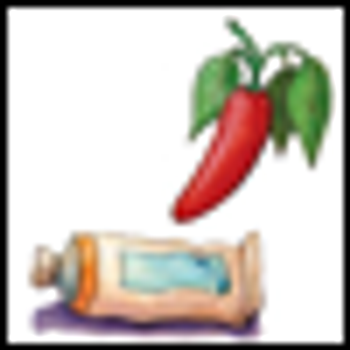
An NCI report concluded that our clinical trial system is nearing a “state of crisis.” This seems like a case of new report, same conclusion.

Your AI-Trained Oncology Knowledge Connection!


An NCI report concluded that our clinical trial system is nearing a “state of crisis.” This seems like a case of new report, same conclusion.

Survey results indicate patient access schemes in the UK and the U.S. need refinement.

PET paired with a variety of radiotracers offers insights into the metabolic, DNA, and protein pathways.

Rules balance access to promising new therapies against the need to protect patient safety.

A little-known enzyme found almost exclusively in tumor cells appears to help them resist radiation damage (until a way can be found to thwart their effects)



It can alleviate adverse effects of cancer treatment, but can it also be used as a chemopreventive?

The treatment of anal squamous cell cancer with definitive chemoradiation is the gold-standard therapy for localized anal cancer, primarily because of its sphincter-saving and colostomy-sparing potential.

It’s not an outcome Dr. Harold Freeman, President and Founder, Ralph Lauren Center for Cancer Care and Prevention, or anyone else could have imagined, but since cancer patient navigators were introduced in the 1990s, we’re seeing battles and competition over just about every aspect of it.

Medical imaging represents “low-hanging fruit” in the battle to curtail rising cancer costs, according to Dr. Kevin Schulman, director of the Duke Center for Clinical and Genetic Economics at Duke University.

Studies have shown that 90% of patients with advanced cancer experience severe pain. Studies have also found that more than 50% of patients are undertreated for their cancer pain. Considering that we have the ability to properly manage the great majority of cancer pain, why are so many of our patients suffering needlessly?

In today’s contentious debate over how to best deliver cost-effective healthcare, insurers have become the villain du jour, taking a backseat only to Wall Street fat cats. It's largely a bum rap. There are plenty of innovative insurers out there, bringing high-value coverage to their customers.

test

Typically glioblastoma patients are dead within 15 months of diagnosis, no matter how complete and well-planned their therapy. Cells sloughed from the brain tumor escape the surgery and somehow stand up to months of radiation and chemotherapy, leading to a recurrence of the tumor and the death of the patient. Researchers at the University of Bonn are beginning to unwind how they do it.

A newly released report by NCI- A National Cancer Clinical Trials System for the 21st Century: Reinvigorating the NCI Cooperative Group Program-has concluded that our national clinical trial system is nearing a “state of crisis.” This seems like a case of new report, same conclusion.

A survey recently released by the American Pain Foundation (APF)

Thomas A. D’Amico, MD, has been elected chair of the board of directors of the National Comprehensive Cancer Network.

There currently are no approved therapies for Waldenström macroglobulinemia, but everolimus (Afinitor) may be the answer. A collaborative phase II study showed encouraging single-agent activity with everolimus in relapsed and/or refractory disease.

The American Cancer Society and ASCO bestow awards while ASTRO enhances its staff. Read more about the latest accolades and appointments in the cancer care community.

Capsaicin, the active component derived from the fruit of capsicum, is used to relieve pain, to improve circulation, to treat cluster headaches and psoriasis, and for weight loss. Capsicum or cayenne pepper, a shrub prevalent in many tropical and subtropical climates, is an important ingredient of many cuisines around the world. It has been used in traditional medical systems as a remedy for digestive and circulatory problems, poor appetite, and to relieve muscle and arthritic pain. Capsaicin is currently available in capsule form and as an ingredient in topical creams.

Although anal cancer is a rare disease, its incidence is increasing in men and women worldwide. The most important risk factors are behaviors that predispose individuals to human papillomavirus (HPV) infection or immunosuppression. Anal cancer is generally preceded by high-grade anal intraepithelial neoplasia (HGAIN), which is most prevalent in human immunodeficiency virus (HIV)-positive men who have sex with men. There is a general consensus that high-risk individuals may benefit from screening. Meta-analysis suggests that 80% of anal cancers could be avoided by vaccination against HPV 16/18. Nearly half of all patients with anal cancer present with rectal bleeding. Pain or sensation of a rectal mass is experienced in 30% of patients, whereas 20% have no tumor-specific symptoms. According to the Surveillance Epidemiology and End Results (SEER) database, 50% of patients with anal cancer have disease localized to the anus, 29% have regional lymph node involvement or direct spread beyond the primary, and 12% have metastatic disease, while 9% have an unknown stage. Clinical staging of anal carcinoma requires a digital rectal exam and a computed tomography scan of the chest, abdomen, and pelvis. Suspicious inguinal lymph nodes should be subject to pathologic confirmation by fine-needle aspiration. The 5-year relative survival rates are 80.1% for localized anal cancer, 60.7% for regional disease, and 29.4% for metastatic disease. Part 2 of this two-part review will address the treatment of anal cancer, highlighting studies of chemoradiation.

The theme of this year’s ASCO meeting is “advancing quality through innovation.” As always, the vast scope of this annual meeting is daunting. In order to give our readers an ongoing analysis of ASCO ’10, The Oncology Forum will be posting daily from Chicago, parsing out the best sessions and most relevant clinical information.

Oncology fared well under the new healthcare reform legislation without cuts to the core businesses of medical oncology, radiation oncology, office-administered drugs, and PET/PET-CT imaging.

Mismanaged therapy at one institution has dealt a blow to the field, but practitioners explain why the technique remains worthwhile.

On February 16, 2010, a Risk Evaluation and Mitigation Strategies (REMS) program to ensure safe use of erythropoiesis-stimulating agents (ESAs) was approved by the US Food and Drug Administration (FDA).

Derek Raghavan, MD, PhD, FACP, is Chairman and Director of the Cleveland Clinic Taussig Cancer Center. Dr. Raghavan was trained in Medicine and Oncology at the University of Sydney, Australia. He obtained a PhD in experimental pathology from the University of London/Ludwig Institute for Cancer Research, and then completed post-doctoral studies at the University of Minnesota. Dr. Raghavan has produced about 300 scientific papers, and has edited 9 books. His clinical and research interests are focused on genitourinary cancer, cancer in the elderly, disparities of cancer care, anticancer drug discovery and development and comparative human oncology.

The May 2010 theme of Oncology Nursing Month is “Oncology Nurses: There When You Need Us.”

When she learned that she had breast cancer, Patricia Garrett did what many people with cancer do: she continued working.

With about 12 million cancer survivors living in the US,[1] cancer affects millions of working Americans. Improvements in early detection and treatment have resulted in a significant number of newly diagnosed and long-term survivors of working age.